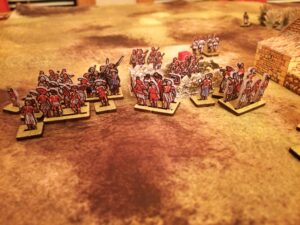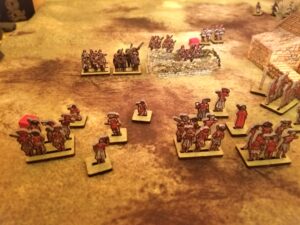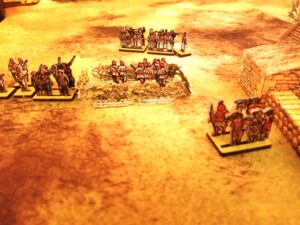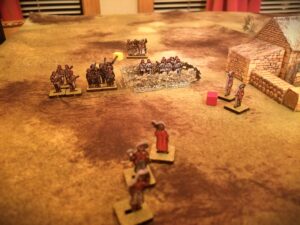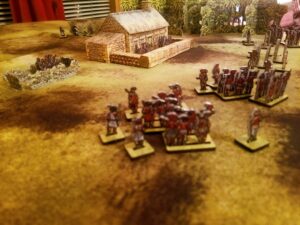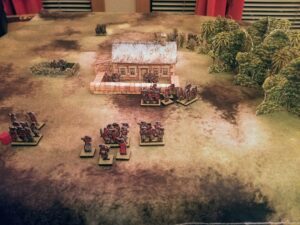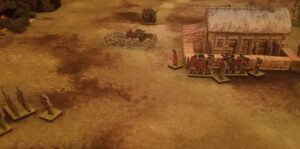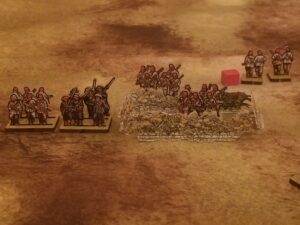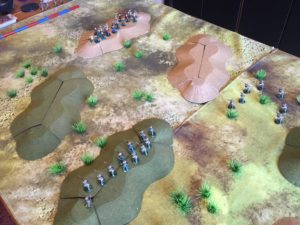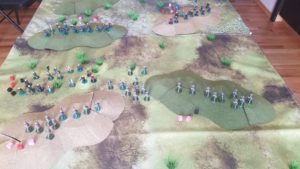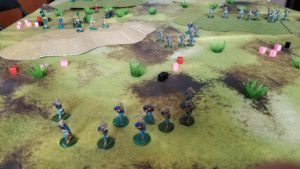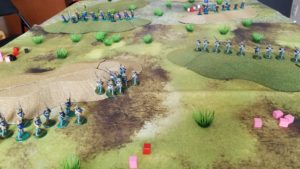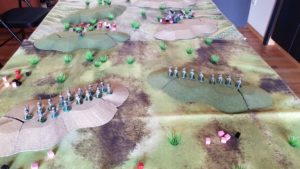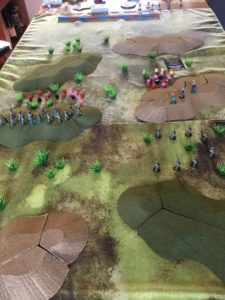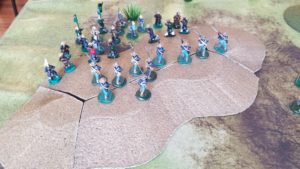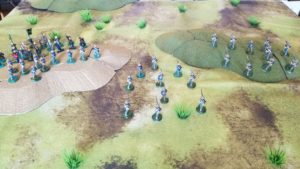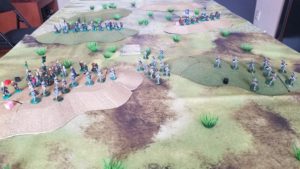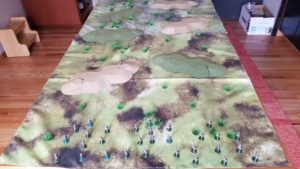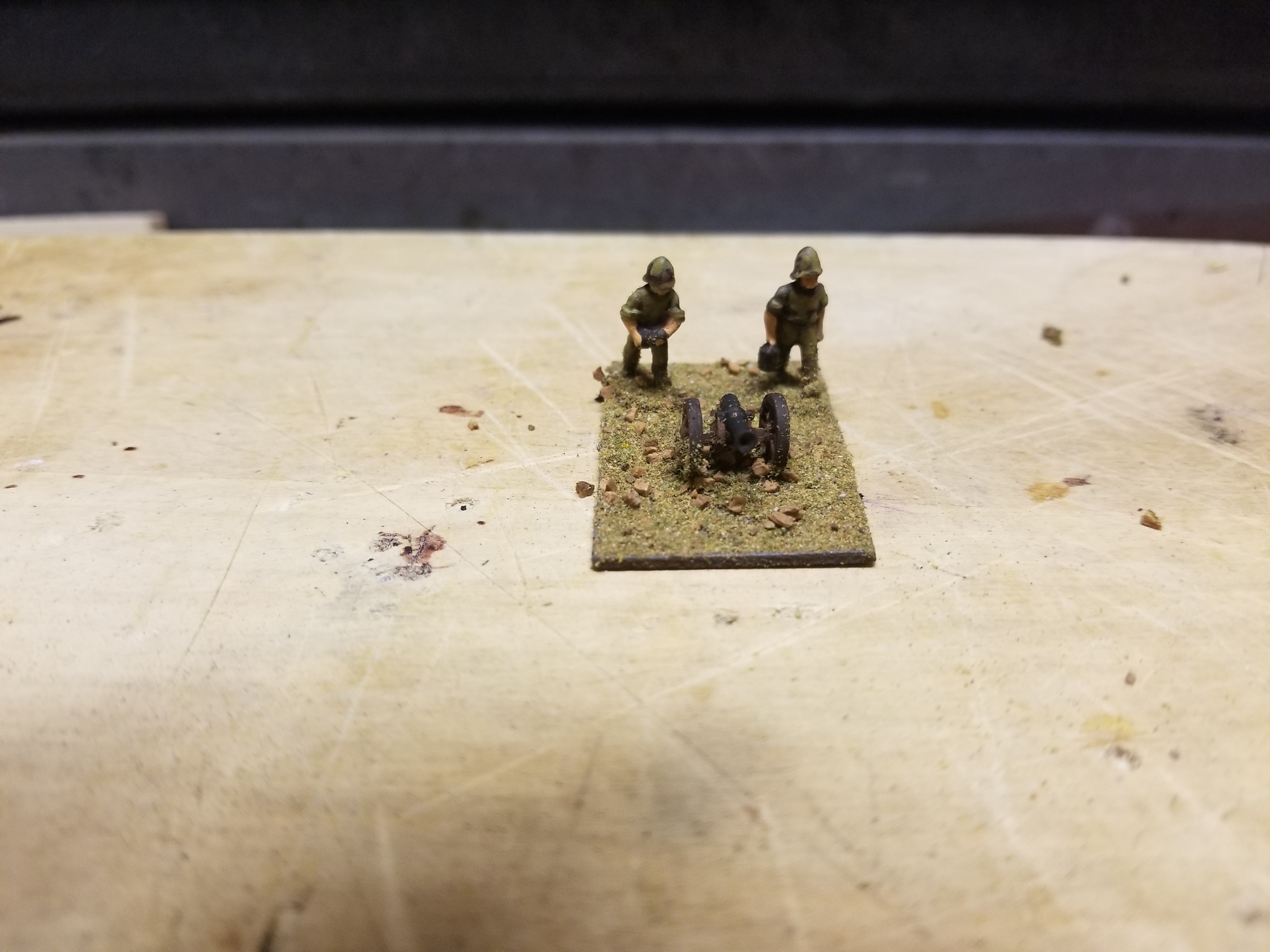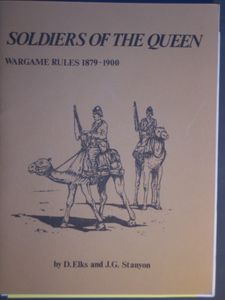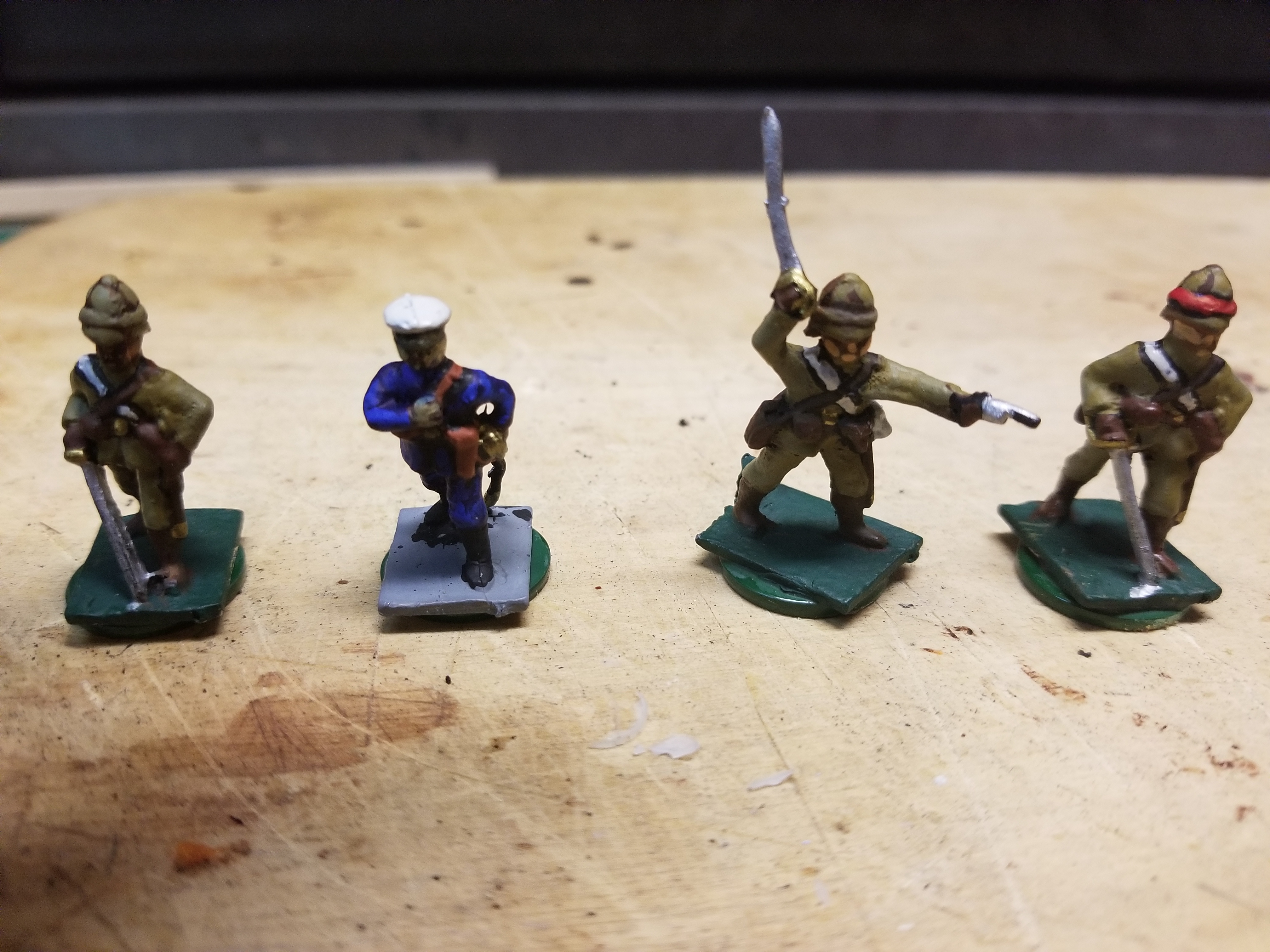I refrained from any review-type comments about this rule set in my initial post.
Changed my mind.
This is a good set of rules. Easy to digest and fun to play. The general structure is very similar to “Pikeman’s Lament”, but provides excellent historical context.
The temptation here is to start layering on house rules to increase rule “realism”. Then it becomes something it is not. I’m sure the author considered anything I thought about and, after careful consideration, declined to add another layer of complexity and/or chrome.
This result is a rule set placing an interesting burden on the players – a different sand box so to speak – to construct interesting scenarios with interesting smaller forces with interesting mixes of troop-types.
What a relief! No longer are colonial battles limited to big games with small, highly disciplined, regular units decimating wave-after-wave of native hordes. Rorke’s Drift is so boring.
Here are some thoughts based on my initial play-throughs and formulaic scenario described in my previous posts.
- Make the majority, if not all, of your Askari units Irregulars. As Irregulars, their musketry and hand-to-hand capabilities will make them far more vulnerable.
- Upgrade at least one (1) Tribal unit to “well armed”. Longer range will increase their ability to inflict casualties and pin opposing forces. A pinned unit is very vulnerable in melee.
- Use “Go To Ground” for native units in the open and waiting to assault.
- “On The Double” is one way to allow your Tribal units to remain out of deadly short-range weapons fire (especially when delivered by Regulars), and have decent chance of attacking into melee. All you have to do is roll a D6x5 or D6x6 to get the extra move distance. Try it with multiple units.
- Vary the leader rating of your Native units to avoid a cycle of pin/rally/pin.
